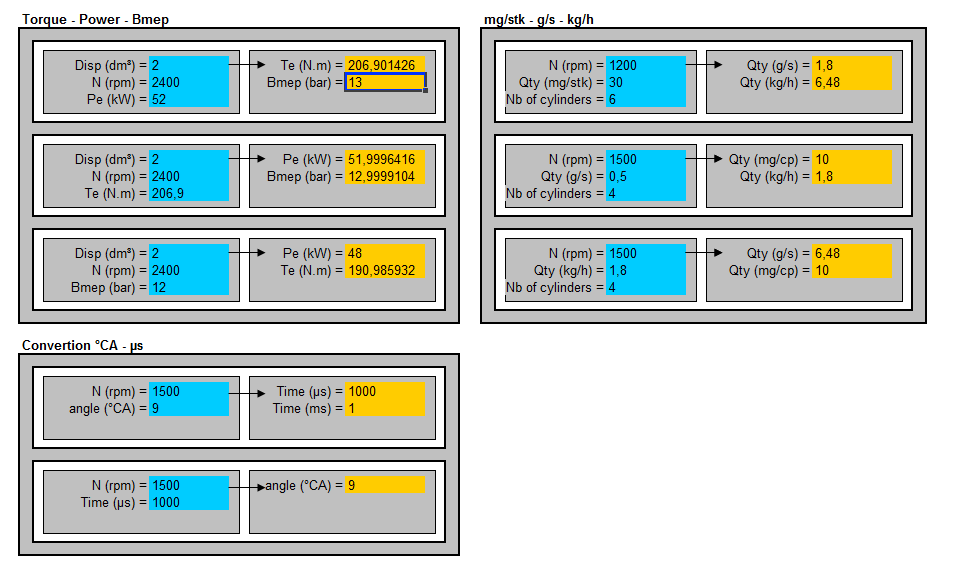“The S 500 PLUG-IN HYBRID is the first luxury saloon with the performance of a V8 and the fuel consumption of a compact model. The greatest challenge in this is to translate efficiency into superior performance. In this respect there is a highly interesting parallel with our successful Formula 1 racing car, which likewise has a turbocharged V6 engine and a high-tech hybrid drive,” says Prof. Dr. Thomas Weber, member of the Daimler Board of Management responsible for Group Research and Mercedes-Benz Cars Development.
“The new S 500 PLUG-IN HYBRID offers our customers the entire range of innovations that make our new S-Class so successful, and thanks to its intelligent operating strategy ensures outstanding driving pleasure and dynamism combined with the highest efficiency. Moreover, it allows completely emission-free driving for up to 33 km,” adds Ola Källenius, Executive Vice President Sales and Marketing Mercedes-Benz Cars.
The Mercedes-Benz S 500 PLUG-IN HYBRID offers a system output of 325 kW and 650 Nm torque, sprints from 0 to 100 km/h in 5.2 seconds and can drive up to 33 km purely electrically. The certified consumption is 2.8 liters/100 km, which corresponds to 65 g CO2/km emissions.[image_frame style=”framed_shadow” align=”center” alt=”Mercedes Benz S 500 Hybrid Plug-in” title=”The Mercedes-Benz S 500 PLUG-IN HYBRID offers a system output of 325 kW and 650 Nm torque” height=”424″ width=”600″]https://www.car-engineer.com/wp-content/uploads/2014/09/Mercedes-Benz-S-500-Hybrid-Plug-in.jpg[/image_frame]
Following the S 400 HYBRID and S 300 BlueTEC HYBRID, the S 500 PLUG-IN HYBRID is the third hybrid model in the new S-Class. Its new high-voltage lithium-ion battery with an energy content of 8.7 kWh can be externally recharged via the charging socket in the right side of the rear bumper.
The hybrid transmission is based on the 7G-TRONIC PLUS 7-speed automatic transmission. The plug-in-hybrid system in the S-Class is based on the Mercedes-Benz parallel hybrid modular system. The common system-specific feature is the additional clutch integrated between combustion engine and electric motor. On the one hand, it decouples the combustion engine during purely electric operation; on the other hand, if the combustion engine is employed it affords the possibility to move off drawing on the performance of a wet start-up clutch. The clutch then substitutes for the torque converter and requires no additional space owing to its complete integration in the torque converter housing.
Haptic accelerator pedal
Depending on the chosen operating mode, the intelligent operating strategy automatically selects the optimal combination of internal combustion engine and electric motor and in so doing not only adapts its strategy according to the charge status of the battery; it also foresightedly adjusts it according to the traffic or route. But anyone wanting to can also intervene manually and with the aid of four operating modes and three transmission modes regulate the hybrid interplay themselves.
What is known as the haptic accelerator pedal can signal via a double impulse when drivers should take their foot off the accelerator for sailing and recuperating. During electric operation it can supply the driver with feedback on the switch-on point of the combustion engine. The energy flow is shown in all operating states in the instrument cluster and in the central display, if this is selected by the customer.
The technical data of the S 500 PLUG-IN HYBRID
[minimal_table]
| Model | S 500 PLUG-IN HYBRID |
| Internal combustion engine | |
|---|---|
| Number of cylinders/arrangement | 6/V |
| Mixture formation | High-pressure injection, 2 turbochargers |
| Displacement (cc) | 2996 |
| Rated output (kW/hp at rpm) | 245/333 at 5250-6000 |
| Rated torque (Nm at rpm) | 480 at 1600-4000 |
| Electric motor | |
| Output (kW) | 85 |
| Torque (Nm) | 340 |
| System output (kW/hp) | 325/442 |
| System torque (Nm)1 | 650 |
| Consumption combined from (l/100 km)2 | 2.8 |
| CO2 emissions combined from (g/km)2 | 65 |
| Efficiency class | A+ |
| Electric range (km) | 33 |
| Charge time 20%-100% (400 V/16 A – 230 V/8 A)3(h) | 2 – 4.1 |
| Acceleration 0-100 km/h (s) | 5.2 |
| Top speed (km/h)1 | 250 |
| Top speed electric (km/h)1 | 140 |
| Price (euros)4 | 108,944.50 |
[/minimal_table]
1 Electronically limited, 2 In accordance with NEDC, 3 Charge time at 230 V/8 A e.g. at a commercially available socket. Through settings on the control element of the charging cable shorter charge times can be realized (standard setting: 8 A), provided that the power supply system is designed for this. Charge time at 400 V/16 A e.g. at a wall box. The voltage and current ratings indicated refer to the power supply infrastructure and can be limited by the car. 4 Sales price in Germany, incl. 19 percent VAT
Pre-entry climate control
The standard equipment in the S 500 PLUG-IN HYBRID offers a world premiere: the extended pre-entry climate control. This is target value controlled meaning that at the start of the journey the S-Class is air conditioned to the preset temperature if the driver has entered the departure time, via Mercedes connect me, for example. This is possible due to the electrically driven refrigerant compressor and electric heating elements for the heated air. In addition to this, when preheating it is not only the interior air but also the seats, steering wheel and armrests in the doors and center console which are heated, and when cooling the seat ventilation is also activated if the respective optional extra is on board.
The Mercedes-Benz hybrid strategy
Following the S 400 HYBRID and S 300 BlueTEC HYBRID, the S 500 PLUG-IN HYBRID is the third hybrid model in the new S-Class. The series production launch of this technology began at Mercedes-Benz in 2009.
Hybrid drives, the combination of internal combustion engine and electric drive, help cut overall fuel consumption and boost performance, since the electric drive replaces or supports the combustion engine whenever the engine characteristics are unfavorable — normally in part-load operation when little power is required.
The largest potential for lowering the energy consumption of hybrid drive systems lies in maximizing energy recovery during coasting and braking. Upon depressing the brake pedal the deceleration is initially effected by the electric motor and not by the disc brakes. The hybrid models of the new S-Class are the first to use a recuperative braking system of the second generation. It ensures an overlapping of the conventional mechanical brakes and the electric braking performance of the electric motor in generator mode.
Intelligent operating strategy
For efficient operation, foresighted driving, avoiding unnecessary braking and accelerating maneuvers, is considered as the best strategy. This gains an all new importance in a hybrid model: braking maneuvers serve not only deceleration, but can also be used to recuperate energy. And the route has considerable influence on the most efficient charging and discharge of the high-voltage battery.[image_frame style=”framed_shadow” align=”center” alt=”Mercedes Benz intelligent operating strategy – predictive driving system” title=”For efficient operation, foresighted driving, avoiding unnecessary braking and accelerating maneuvers, is considered as the best strategy” height=”572″ width=”600″]https://www.car-engineer.com/wp-content/uploads/2014/09/Mercedes-Benz-intelligent-operating-strategy-predictive-driving-system.jpg[/image_frame]
The intelligent operating strategy supports the driver comprehensively yet unobtrusively to achieve the most efficient driving style. The control strategy, for example, seeks to ensure that the battery, if at all possible, is flat at the end of an uphill stretch so that it can be recharged going downhill. Another key point is the requirement that urban areas be reached with a fully charged battery, if possible, so that the vehicle can be operated in stop-and-go traffic electrically – frequently and efficiently.[image_frame style=”framed_shadow” align=”center” alt=”S 500 Hybrid plug-in operating modes” title=”The intelligent operating strategy supports the driver comprehensively yet unobtrusively to achieve the most efficient driving style” height=”400″ width=”600″]https://www.car-engineer.com/wp-content/uploads/2014/09/S-500-Hybrid-plug-in-operating-modes.jpg[/image_frame]
In the S 500 PLUG-IN HYBRID the energy management system basically covers these three areas:
- route-based: automatically or by way of four operating modes
- driver-based: by way of three transmission modes
- traffic-based: with the aid of radar.
The plug-in charging system
The battery of the S 500 PLUG-IN HYBRID is fitted into the rear end of the S-Class to save space. An intelligent on-board charging system enables the battery to be charged at any conventional household power socket.
The S 500 PLUG-IN HYBRID stores electric energy in a lithium-ion battery on lithium-iron phosphate basis. The water-cooled energy storage unit has an overall capacity of 8.7 kWh, a total weight of 114 kg and a spatial volume of 96 liters.
To ensure highest levels of crash safety and dynamic handling and also maximum boot space, the housing is made of die-cast aluminum and the high-voltage battery is located in the rear of the vehicle above the rear axle.
The high-voltage battery of the S 500 PLUG-IN HYBRID can be charged via external electricity mains using a 3.6 kW on-board charger. The unit is permanently installed in the vehicle and charges single-phase up to 16 A. The connection for the charging cable is located under a flap in the rear bumper underneath the tail light on the right-hand side. An automatic lock ensures that the cable cannot be separated from the vehicle by unauthorized persons. The new S-Class can be charged in two hours anywhere in the world, e.g. at a wall box or a charging pole (400 V, 16 A). Alternatively, charging via house connection is also possible. Depending on the connection a charge time e.g. of two hours and 45 minutes can be attained (with 230 V and 13 A). The charge time ranges between 2 hours (400 V/16 A, e.g. at a wall box) and 4.1 hours (230 V/8 A, e.g. at a household power outlet).[image_frame style=”framed_shadow” align=”center” alt=”S 500 Hybrid Plug-in charging socket” title=”The high-voltage battery of the S 500 PLUG-IN HYBRID can be charged via external electricity mains using a 3.6 kW on-board charger” height=”400″ width=”600″]https://www.car-engineer.com/wp-content/uploads/2014/09/S-500-Hybrid-Plug-in-charging-socket.jpg[/image_frame]
Through settings on the control element of the charging cable, shorter charge times can be realized even with household power outlets, provided that the power supply system is designed for this. The voltage and current ratings indicated refer to the power supply infrastructure and can be limited by the car. All charge times refer to the charging of the battery from 20% to 100%.
Next step: S 500 PLUG-IN HYBRID – Inductive battery charging
One of the next steps on the way to the perfect electric vehicle and plug-in hybrid is cableless charging. Inductive battery charging will make the handling of electric vehicles and plug-in hybrids more convenient. Mercedes-Benz will test this “unplugged” technology with the S 500 PLUG-IN HYBRID in order to develop a genuine S-Class solution, in terms of comfort and ease of operation, for the charging of the high-voltage battery.




















